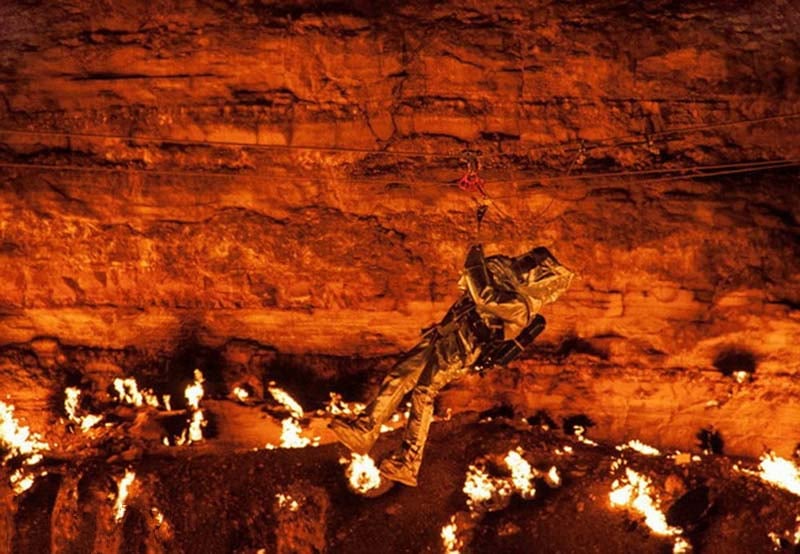Nestled within the vast expanse of Turkmenistan’s Karakum Desert lies a phenomenon that has captured the imagination of adventurers, scientists, and curious travelers alike – the mesmerizing “Door to Hell.” This colossal crater, colloquially known as the Darvaza Gas Crater, has earned its ominous epithet due to its perpetually blazing flames and surreal appearance. While legends and speculation abound regarding its origins and significance, delving deeper into the geology, history, and cultural context surrounding this enigmatic site reveals a complex tapestry of scientific marvels, human ingenuity, and ancient folklore.
The genesis of the Darvaza Gas Crater traces back to the early 1970s when Soviet geologists embarked on a quest to tap into Turkmenistan’s vast natural gas reserves. In their pursuit of energy resources, they inadvertently stumbled upon a cavernous gas deposit beneath the desert’s surface. However, their ambitious drilling efforts took an unforeseen turn when the ground beneath the rig collapsed, giving rise to a massive sinkhole spanning approximately 70 meters in diameter and 20 meters in depth.
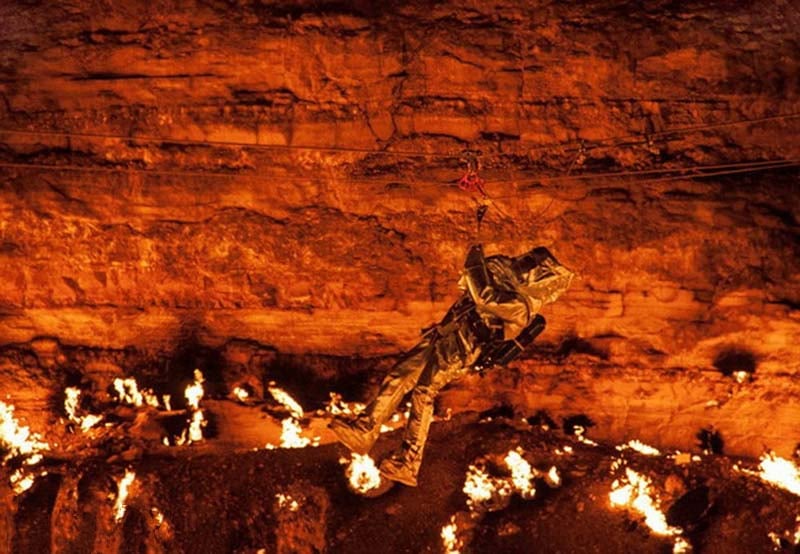
Faced with the daunting prospect of toxic gas emissions and potential environmental hazards, the Soviet engineers made a fateful decision – to set the crater ablaze in a bid to burn off the escaping methane gas. What was intended as a temporary solution to mitigate the risk of gas leakage unexpectedly transformed into a perpetual inferno, casting a radiant glow that illuminated the desert night.
As the flames continued to dance unabated, rumors and speculation surrounding the crater’s origins began to proliferate. Some locals attributed the phenomenon to supernatural forces, weaving tales of djinns and otherworldly portals lurking beneath the desert sands. Others speculated that the Soviet government had engaged in clandestine experiments or industrial sabotage, leading to the creation of the fiery pit.
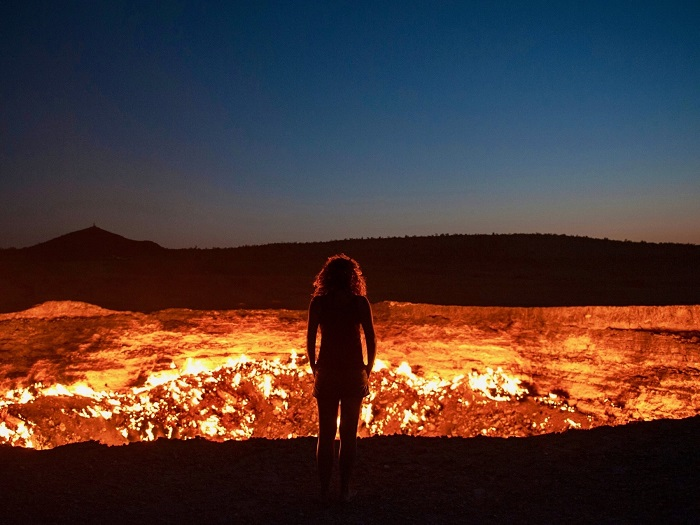
However, scientific inquiry offers a more grounded explanation for the Darvaza Gas Crater’s existence. Geologists assert that the crater’s perpetually burning flames are fueled by the vast reservoirs of natural gas that lie beneath Turkmenistan’s desert terrain. The accidental puncturing of the gas pocket during drilling operations resulted in the release of methane, which continues to seep to the surface and ignite upon contact with oxygen.
Moreover, the unique geological conditions of the Karakum Desert, characterized by its arid climate and sparse vegetation, contribute to the sustained combustion within the crater. With no significant rainfall to extinguish the flames and minimal organic matter to deplete the gas reservoir, the fiery spectacle shows no signs of abating, casting a mesmerizing glow that beckons travelers from far and wide.
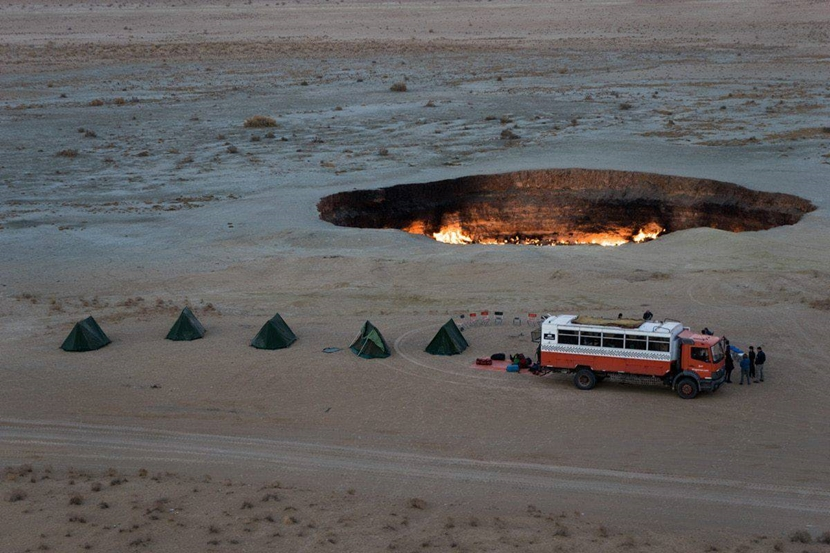
Despite the scientific explanations offered for the Darvaza Gas Crater, its allure and mystique persist, captivating the imaginations of those who venture into Turkmenistan’s remote desert landscape. For locals, the crater holds cultural significance, symbolizing the country’s abundant natural resources and its resilience in the face of adversity.
Today, the “Door to Hell” serves as a unique attraction and a testament to the enduring mysteries of our planet. Whether viewed through the lens of science, folklore, or cultural heritage, the Darvaza Gas Crater continues to beckon intrepid explorers and curious minds, inviting them to unravel its secrets and contemplate the wonders that lie hidden beneath the desert sands.
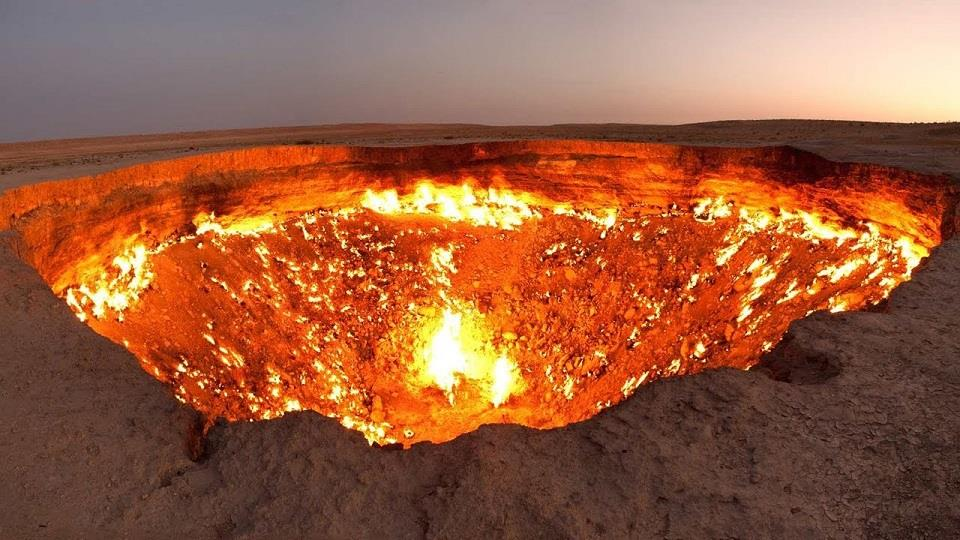
In conclusion, the Darvaza Gas Crater stands as a symbol of Turkmenistan’s rich natural heritage and its enigmatic allure. Beyond its fiery facade lies a complex tapestry of geological processes, human intervention, and cultural mythology, offering a glimpse into the mysteries that abound in our world. As travelers and researchers continue to probe its depths, the “Door to Hell” remains an enduring enigma, inviting us to explore, discover, and marvel at the wonders of our planet.

